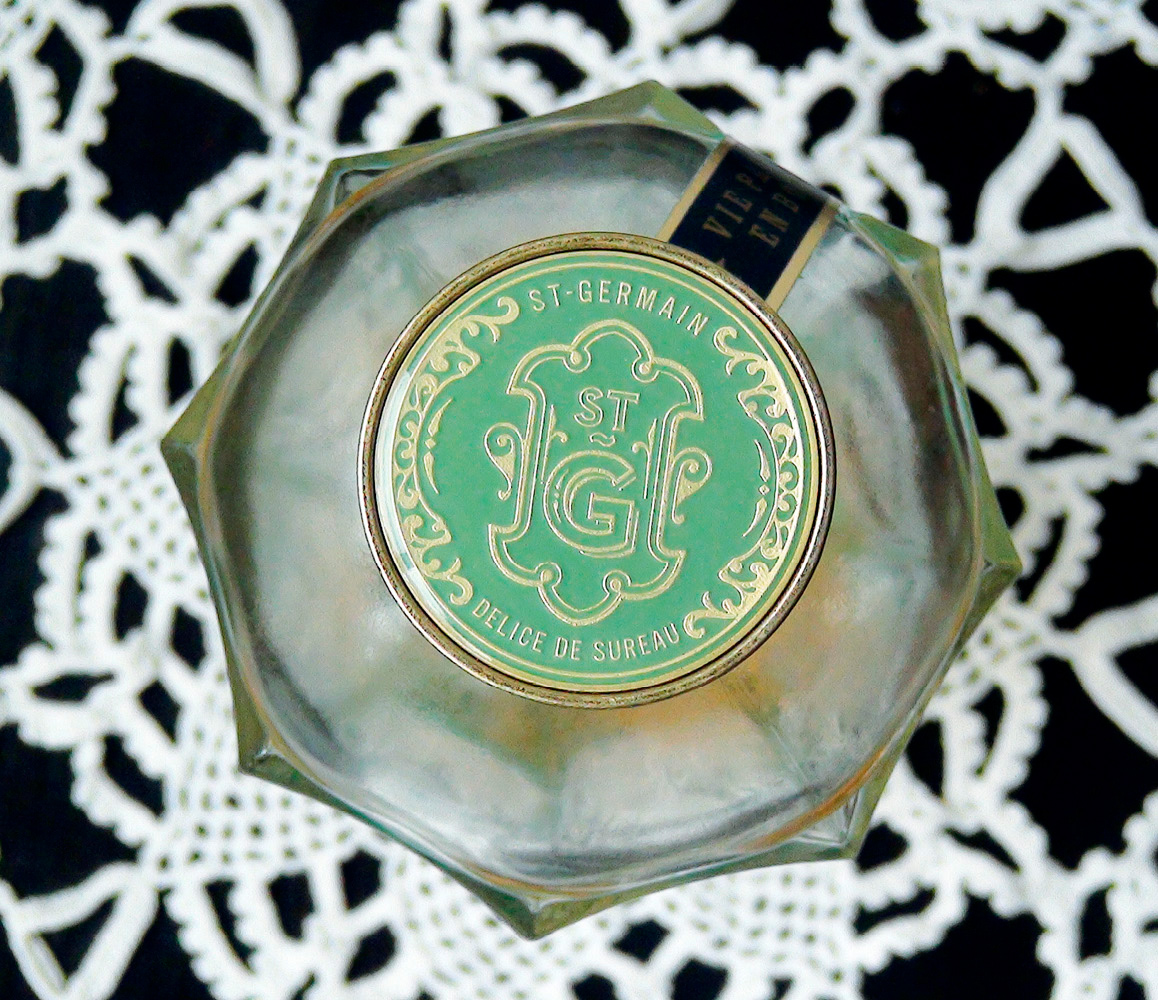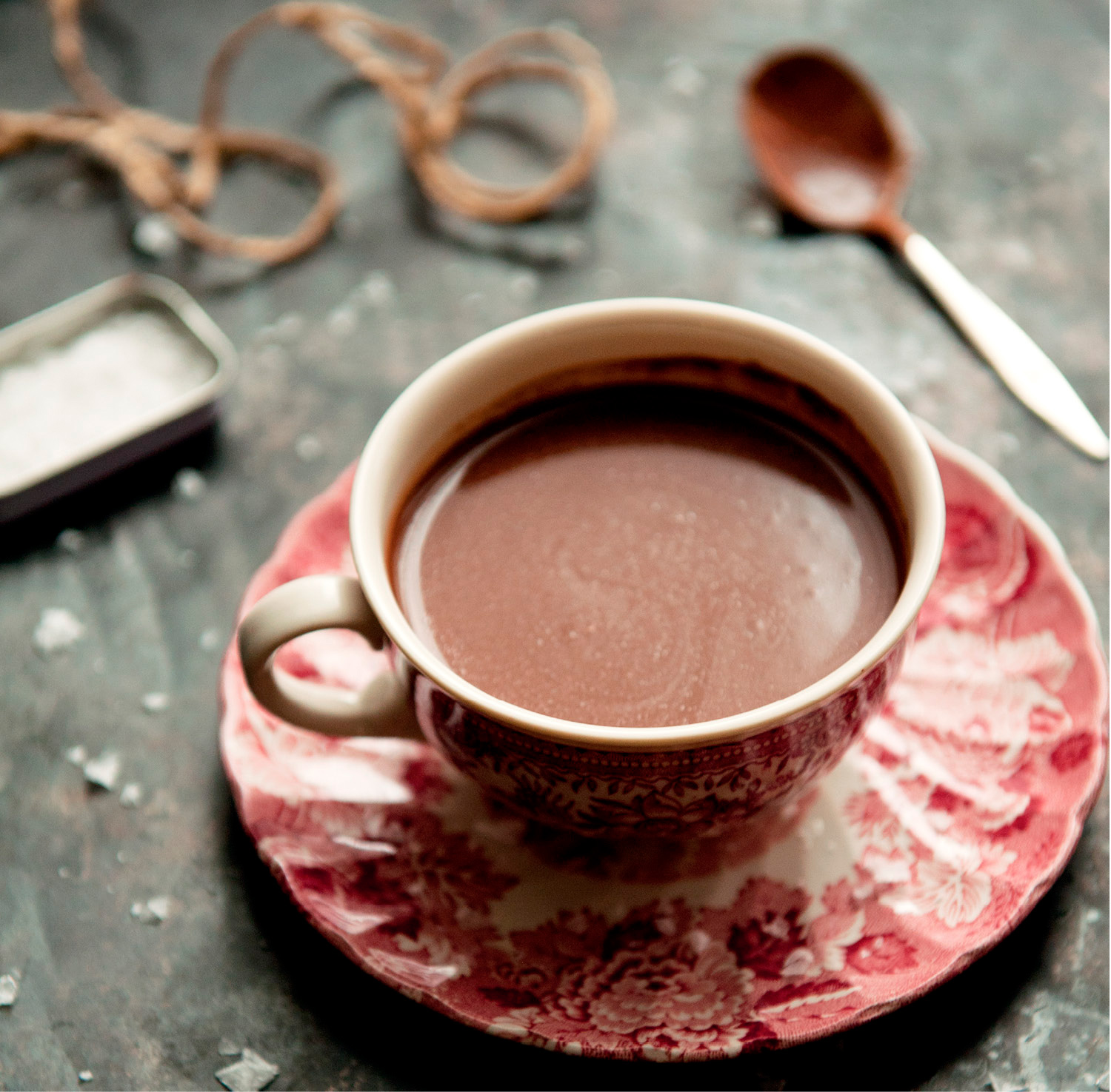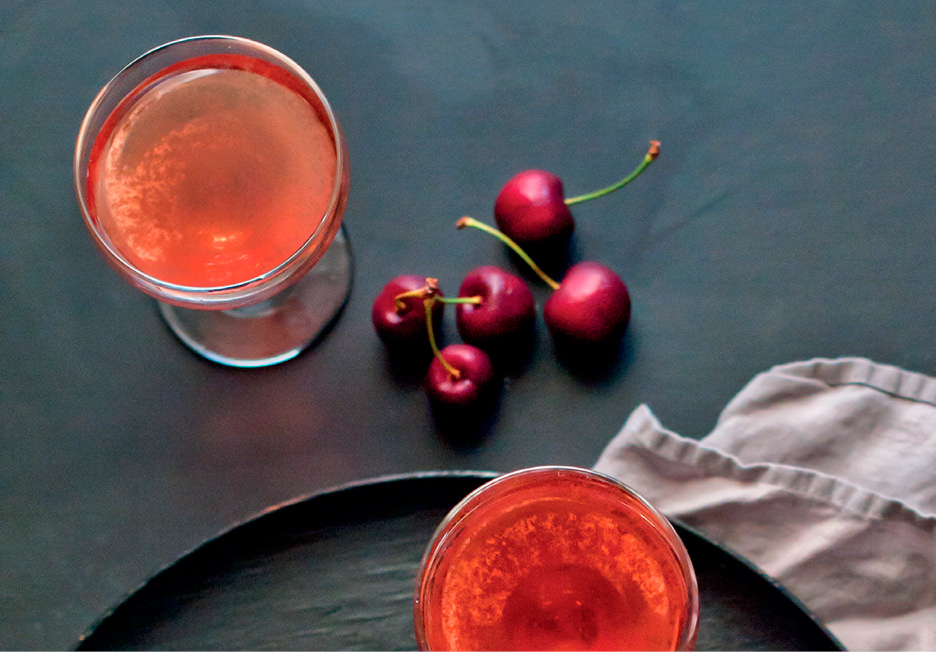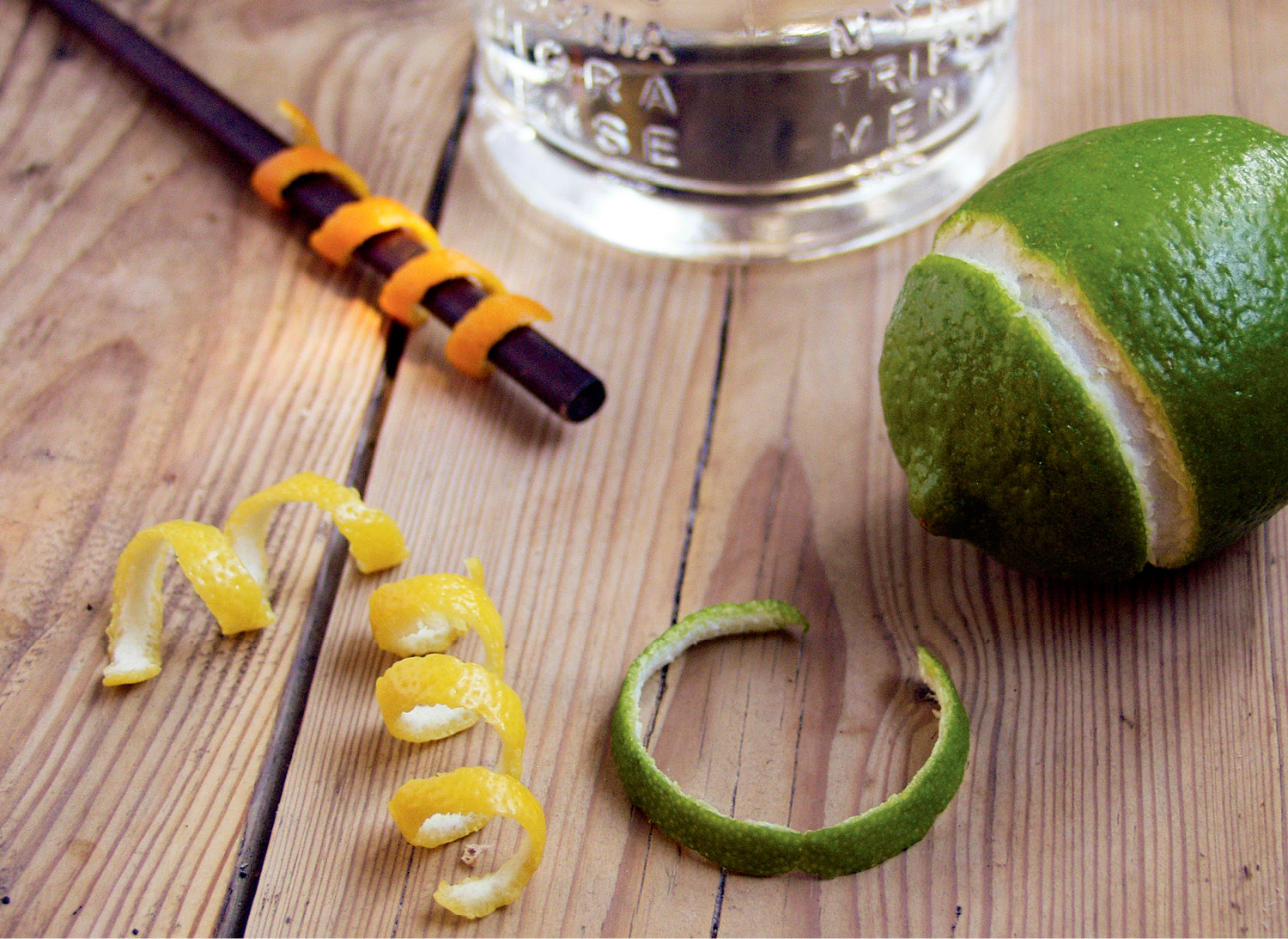


Drinks and Cocktails
The Comte St. Germain’s Poison

“Drink, Monsieur,” said the King. The dark eyes were hooded once more, showing nothing. “Or are you afraid?”
The Comte might have a number of things to his discredit, but cowardice wasn’t one of them. His face was pale and set, but he met the King’s eyes squarely, with a slight smile.
“No, Majesty,” he said.
He took the cup from my hand and drained it, his eyes fixed on mine. They stayed fixed, staring into my face, even as they glazed with the knowledge of death. The White Lady may turn a man’s nature to good, or to destruction.
The Comte’s body hit the floor, writhing, and a chorus of shouts and cries rose from the hooded watchers, drowning any sound he might have made. His heels drummed briefly, silent on the flowered carpet; his body arched, then subsided into limpness. The snake, thoroughly disgruntled, struggled free of the disordered folds of white satin and slithered rapidly away, heading for the sanctuary of Louis’s feet.
All was pandemonium.
—Dragonfly in Amber, chapter 27, “An Audience with His Majesty”
A sophisticated cocktail made from gin and tonic, lightly sweetened with St-Germain elderflower liqueur. Poison never tasted so good.
Makes 1
Ingredients
1½ ounces gin
½ ounce St-Germain elderflower liqueur, or more to taste
Ice
Tonic water
Lime twist
Method
Add the gin and St-Germain to an ice-filled glass. Top up with tonic, stir, and serve with the twist.
After a peaceful and not unpleasant sit with Mrs. Baird, I made my way upstairs, to ready myself before Frank came home. I knew his limit with sherry was two glasses, so I expected him back soon.
The wind was rising, and the very air of the bedroom was prickly with electricity. I drew the brush through my hair, making the curls snap with static and spring into knots and furious tangles.
—Outlander, chapter 1, “A New Beginning”
A cocktail I can imagine Frank indulging in after Claire’s disappearance; after all, when your wife vanishes, a double is what’s needed to calm the old nerves.
Serves 1
Ingredients
2 ounces fresh orange juice
6 large fresh mint leaves
1 teaspoon sugar
1 cinnamon stick
4 ounces dry sherry
Ice cubes
Method
Muddle the orange juice, mint, and sugar with the cinnamon stick in an old-fashioned glass. Add the sherry and ice cubes, stir, and serve.
Atholl Brose for the Bonnie Prince
“If I may present my wife, Your Highness?” he said. “Claire, my lady Broch Tuarach. Claire, this is His Highness, Prince Charles, son of King James of Scotland.”
“Um, yes,” I said. “I’d rather gathered that. Er, good evening, Your Highness.” I nodded graciously, pulling the bedclothes up around me. I supposed that under the circumstances, I could dispense with the usual curtsy.
The Prince had taken advantage of Jamie’s long-winded introduction to fumble his trousers into better order, and now nodded back at me, full of Royal dignity.
“It is my pleasure, Madame,” he said, and bowed once more, making a much more elegant production of it. He straightened and stood turning his hat in his hands, obviously trying to think what to say next. Jamie, standing bare-legged in his shirt alongside, glanced from me to Charles, seemingly at an equal loss for words.
—Dragonfly in Amber, chapter 11, “Useful Occupations”
Atholl Brose has a long, colorful past—including the quelling of a rebellion—stretching back to 1475. Its fascinating history and satisfying finish far outshine that of its better-known cousin, Baileys Irish Cream, which first came to market in 1974.
Sweet, creamy, and delicious, Atholl Brose is the perfect after-dinner digestif, with a smooth finish the Bonnie Prince could only pull off in his dreams.
Makes about 2 cups
Ingredients
1 cup steel-cut or rolled oats
1 cup blended scotch whisky
1 tablespoon honey
½ cup light cream
Method
Soak the oats in 2 cups of water overnight.
Drain the oats in a strainer lined with cheesecloth or muslin, and squeeze the cloth to extract all the liquid. Mix 1 cup of the strained oat milk with the whisky in a pitcher. Gently whisk in the honey until dissolved, and stir in the cream.
Serve chilled or over ice. The flavor improves on the second or third day, once the flavors have had a chance to combine.
Keep in the refrigerator up to 1 month.
Notes
• Choose a midpriced blended whisky for a smooth result. If you decide on a more expensive single malt, stay away from those heavy on the peat, as it will overpower the sweetness of the honey and the richness of the cream.
• Dairy-free? Skip the cream. For slightly “creamier” oat milk, pulse the oats and their soaking water in a blender a few times before straining.
• Because it has no emulsifiers, Atholl Brose will separate if left to sit for a few days. Stir or shake gently to recombine.
Hot Chocolate with La Dame Blanche

“The White Lady,” he murmured. “She is called a wisewoman, a healer. And yet . . . she sees to the center of a man, and can turn his soul to ashes, if evil be found there.” He bobbed his head, turned, and shuffled off hastily in the direction of the kitchen. I saw his elbow bob, and realized that he was crossing himself as he went.
“Jesus H. Christ,” I said, turning back to Jamie. “Did you ever hear of La Dame Blanche?”
“Um? Oh? Oh, aye, I’ve . . . heard the stories.” Jamie’s eyes were hidden by long auburn lashes as he buried his nose in his cup of chocolate, but the blush on his cheeks was too deep to be put down to the heat of the rising steam.
I leaned back in my chair, crossed my arms, and regarded him narrowly.
“Oh, you have?” I said. “Would it surprise you to hear that the men who attacked Mary and me last night referred to me as La Dame Blanche?”
“They did?” He looked up quickly at that, startled.
—Dragonfly in Amber, chapter 20, “La Dame Blanche”
Chocolate first came to France in 1643, a gift from Spain, whose conquistadors brought the luxury item back from Mesoamerica. Europeans added sugar to the previously bitter drink to create a thick, luscious treat far and above anything to come from a packet of instant today.
Serves 4
Ingredients
2 cups whole milk
5 ounces (140 grams) finely chopped bittersweet or semisweet chocolate
1 to 2 tablespoons sugar (optional)
Fleur de sel (optional)
Method
In a medium saucepan, heat the milk over medium-low flame.
When the milk is warm, whisk in the chocolate, stirring until melted and steaming hot. To thicken, increase the heat to medium and cook at a low boil for 2 to 3 minutes, whisking constantly. Taste and sweeten with sugar, if desired.
Serve warm, in demitasses or small coffee cups, sprinkled with fleur de sel if desired.
Notes
• Fleur de sel, meaning “flower of salt,” is hand-harvested, small-crystal salt that is used to finish a dish just before serving.
• Add a drop or two of Grand Marnier, or even crème de menthe—just make sure the cask is clean of bodies if you choose the latter.
“It’s true!” She whirled toward Jamie, fists clenched against the cloak she still wore. “It’s true! It’s the Sassenach witch! How could ye do such a thing to me, Jamie Fraser?”
“Be still, Laoghaire!” he snapped. “I’ve done nothing to ye!”
I sat up against the wall, clutching the quilt to my bosom and staring. It was only when he spoke her name that I recognized her. Twenty-odd years ago, Laoghaire MacKenzie had been a slender sixteen-year-old, with rose-petal skin, moonbeam hair, and a violent—and unrequited—passion for Jamie Fraser. Evidently, a few things had changed.
She was nearing forty and no longer slender, having thickened considerably. The skin was still fair, but weathered, and stretched plumply over cheeks flushed with anger. Strands of ashy hair straggled out from under her respectable white kertch. The pale blue eyes were the same, though—they turned on me again, with the same expression of hatred I had seen in them long ago.
“He’s mine!” she hissed. She stamped her foot. “Get ye back to the hell that ye came from, and leave him to me! Go, I say!”
—Voyager, chapter 34, “Daddy”
The sour’s origins are most likely born from a British sailor’s rations of lemons or limes and alcohol, which was often watered down over a long voyage to extend the supply; citrus juice was added to the alcohol to mask its watery taste.
Although more commonly a North American drink made from bourbon, this refreshing cocktail has a natural sourness reflective of the bitter Laoghaire, a woman most Outlanders love to hate.
Serves 1
Ingredients
1 tablespoon honey
2 ounces bourbon
½ ounce fresh lemon juice
Crushed ice
Citrus twist
Method
Dissolve the honey in 1 ounce hot water and stir to cool. Add the bourbon and lemon juice, and serve over crushed ice, garnished with a citrus twist.
“Have you ever drunk sangria, Mrs. Fraser?”
I opened my mouth to say “Yes,” thought better of it, and said, “No, what is it?” Sangria had been a popular drink in the 1960s, and I had had it many times at faculty parties and hospital social events. But for now, I was sure that it was unknown in England and Scotland; Mrs. Fraser of Edinburgh would never have heard of sangria.
“A mixture of red wine and the juices of orange and lemon,” Lawrence Stern was explaining. “Mulled with spices, and served hot or cold, depending on the weather. A most comforting and healthful beverage, is it not, Fogden?”
—Voyager, chapter 50, “I Meet a Priest”
Hot or cold, it’s refreshing, delicious, and dangerous; if you’ve never had sangria, proceed with caution. The brandy can sneak up on you and make you senseless before your second glass—and Mamacita doesn’t strike me as one to tiptoe around a hangover, if you know what I mean.
Serves 2 to 4
Ingredients
1 bottle (750 ml) dry red wine
2 ounces brandy, Triple Sec, or Grand Marnier
½ orange, sliced
½ lemon, sliced
½ lime, sliced
1 cup orange juice
2 to 4 tablespoons sugar
1 2-inch cinnamon stick, plus additional
1 teaspoon whole cloves
1 teaspoon whole peppercorns
1 teaspoon whole allspice
½ teaspoon fennel seeds
Club soda or sparkling water (optional)
Method
Pour 2 cups of wine and the brandy into a pitcher. Add the sliced orange, lemon, and lime. Set aside on the counter for 1 to 2 hours.
In a small saucepan, combine the remaining wine with the orange juice and 2 tablespoons of sugar. Add the cinnamon stick, cloves, peppercorns, allspice, and fennel and heat over medium-high flame until just boiling. Remove from the heat, cover, and steep for 15 minutes. Strain and discard the spices.
To serve warm or hot, pour the wine and brandy (not the fruit) into the saucepan with the steeped wine and warm gently. Taste and add more sugar if needed. Pour everything back over the fruit in the pitcher, stir, and serve immediately in mugs or cups, garnished with a cinnamon stick.
To serve cold, add the cooled, steeped wine to the wine, brandy, and fruit in the pitcher. Refrigerate for at least 1 hour, and up to 1 day, before serving. Taste and add more sugar if needed. Serve with or without ice in wineglasses or tumblers topped up with club soda or sparkling water, if desired.
Note
• This recipe stays true to the story and uses only the citrus fruits Claire described, but apples, melon, mango, pears, grapes, and kiwi all add wonderful flavor and color.

Roger leaned forward and sniffed at his offspring’s red-stained lips.
“Cherry Bounce, at a guess. There’s a vat of it, round by the barn.”
“Holy God!” She’d never drunk Cherry Bounce, but Mrs. Bug had told her how to make it: “Tak’ the juice of a bushel o’ cherries, dissolve twenty-four pound o’ sugar ower it, then ye put it into a forty-gallon cask and fill it up wi’ whisky.”
“He’s all right.” Roger patted her arm. “Is that Germain over there?”
“It is.” She leaned over to check, but Germain was peacefully asleep, also smiling. “That Cherry Bounce must be good stuff.”
Roger laughed.
“It’s terrible. Like industrial-strength cough syrup. I will say it makes ye very cheerful, though.”
—A Breath of Snow and Ashes, chapter 6, “Ambush”
After years of experimentation with Mrs. Bug’s rather vague “receipt,” I’ve concluded that, though it’s inconceivable that Jamie handed over a cask of the aged single malt to Mrs. Bug for her bounce, a midprice or better blended scotch whisky results in a much smoother finished product than a cheap bottle of hooch.
I’ve also cut way back on the sugar. Apparently George Washington liked his bounce extra-sweet, but I’ll take his dentures as a sign to travel a different path. If you can’t find sour, use the deepest, reddest cherries you can find and add a little lemon juice into the mix.
Makes about 3 cups
Ingredients
¾ pound (340 grams) sour cherries, stems removed, pitted
⅓ cup sugar, plus additional
2 tablespoons fresh lemon juice (optional; not necessary if you have sour cherries)
Zest of 1 lemon, grated
25 ounces (750 ml) blended scotch whisky
Stir together the cherries, sugar, lemon juice, if desired, and lemon zest in a 2-quart jar until the sugar is dissolved. Pour the whisky over top and stir again before covering with a tight-fitting lid.
Store in a cool, dark place for 6 to 8 weeks. Taste for sweetness and add 1 to 2 tablespoons more sugar, if desired. Close the jar and return to its waiting place up to 2 more weeks.
Once it’s to your liking, strain the bounce through a strainer lined with a few layers of cheesecloth or a clean linen or cotton tea towel that you don’t mind permanently staining.
Store in a glass container in a cool, dark place.
Notes
• A cherry pitter is an inexpensive and very useful tool. Work in a bowl to avoid cherry juice all over your backsplash and walls. You can also use the cherries with their pits, but if you intend to use the booze-soaked fruit after the whiskey is strained, it’s easier to pit them first.
• Bourbon, vodka, and brandy also make tasty bounces. (Then there was that mango-rum bounce that took my small island’s mojito circuit by storm in summer 2013.)
• The booze-soaked cherries are wonderful coated in chocolate for giftworthy bonbons, made into a batch of homemade ice cream, or eaten one by one, just as they are. Keep them in the freezer until ready to use.
• Drink your bounce straight, or get creative and mix up a few cocktails. One of my favorites is to drop a shot glass of Cherry Bounce into a pint of dry cider, christened a Cherry Bomb by fans on Facebook.

Technically, I supposed, it was a splinter. It was a two-inch sliver of cedar wood, and he’d driven it completely under the nail of his middle finger, nearly to the first joint.
“Jesus H. Roosevelt Christ!”
“Aye,” he agreed, looking a little pale. “Ye might say that.”
The protruding stub was too short to grip with my fingers. I hauled him into the surgery and jerked the sliver out with forceps, before one could say Jack Robinson. Jamie was saying a good deal more than Jack Robinson—mostly in French, which is an excellent language for swearing.
“You’re going to lose that nail,” I observed, submerging the offended digit in a small bowl of alcohol and water. Blood bloomed from it like ink from a squid.
“To hell wi’ the nail,” he said, gritting his teeth. “Cut the whole bloody finger off and ha’ done with it! Merde d’chevre!”
—A Breath of Snow and Ashes, chapter 30, “The Captive”
Drambuie is from the Scottish Gaelic phrase an dram buidheach, meaning the drink that satisfies. Made from scotch whisky, honey, herbs, and spices, the liqueur adds a spiced sweetness that flavors the cocktail without overpowering it.
Traditionally made with blended scotch, you create a different Rusty Nail every time you try a different scotch whisky or whiskey. Switch to bourbon and you’ve got a Rusty Bob; use a peaty whisky and you’re toasting with a Smoky Nail.
Makes 1
Ingredients
1½ ounces scotch whisky
½ ounce Drambuie, or to taste
Ice
Lemon twist
Method
Pour the whisky and Drambuie into an ice-filled glass. Stir and serve with a twist of lemon.